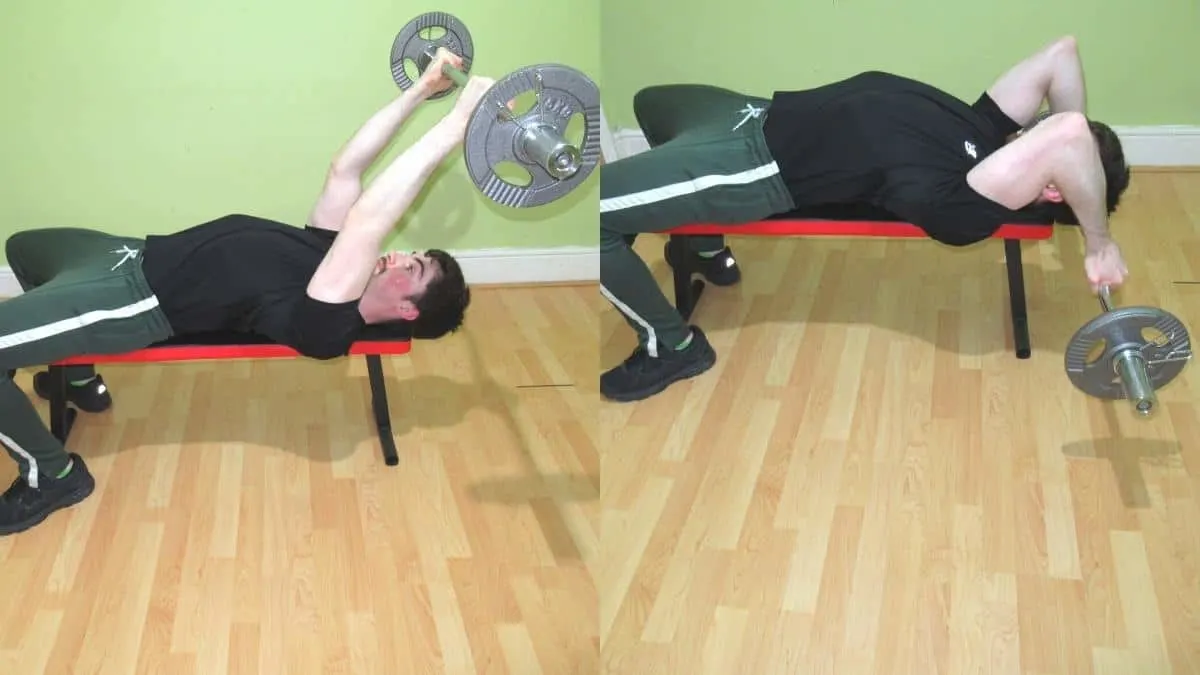Reverse skullcrushers are—on paper—a remarkable tricep exercise because they encourage you to keep your elbows tucked in rather than flared out. While this elbows-in lifting technique certainly trains the triceps well, performing reverse grip skull crushers is actually very dangerous unless you use lifting straps or Versa Gripps to keep the bar secure.
If you don’t use these straps, then you could cause yourself a severe injury by dropping the bar on your face and crushing your skull.
For this reason, only advanced lifters should attempt the barbell reverse grip skullcrusher, and even then, only after making a couple of crucial safety modifications.
There are, however, other reverse grip skull crusher variations that are much safer than the standard barbell version. More on those exercises shortly.
Reverse grip skull crusher exercise details
- Also Known As: Underhand skull crushers, supinated skull crushers
- Main Muscles: Triceps
- Exercise Type: Strength
- Exercise Mechanics: Isolation
- Difficulty Level: Advanced
- Equipment Needed: Bar, weights, bench
How to do reverse grip skull crushers

- Load a light amount of weight onto an EZ bar. For more convenience, use a preloaded bar.
- Grab the bar with a supinated grip and wrap your lifting straps securely around the bar.
- Lie back on the bench and press the bar up so that it’s positioned over your forehead.
- Lower the bar behind your head by breaking at your elbows.
- Allow enough backward shoulder movement to get an intense stretch in the long (inner) head of your triceps.
- Reverse the motion by extending your elbows until they reach complete lockout.
- Repeat for 3-5 sets of 10-20 reps.
For extra safety, perform reverse skullcrushers in a squat rack with the safety stops positioned just above your head. This way, you can train your triceps with a full range of motion without the risk of actually dropping the bar on yourself.
Are reverse grip skull crushers safe?
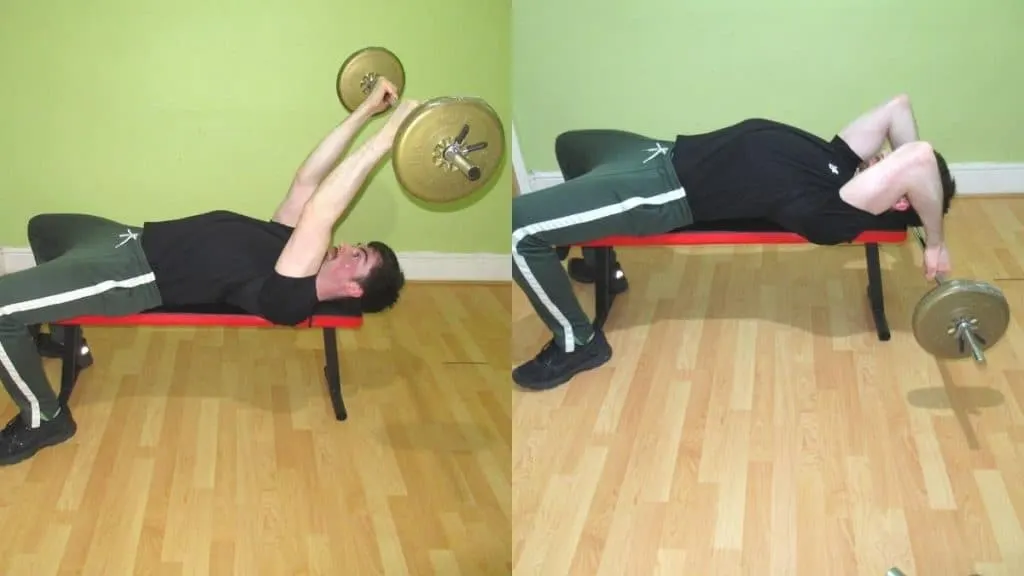
Reverse grip skull crushers can be safe if you use the proper form and make a few safety modifications to the exercise.
First and foremost, you shouldn’t lift excessively heavy weights on exercises like reverse skull crushers or wide grip skull crushers because doing so can hurt your elbows.
Additionally, you should lower the weight behind your head rather than to your forehead so that you reduce the risk of the bar hitting your face.
In the final analysis, the reverse skull crusher—especially when performed with a barbell—is, by far, the least safe type of skull crusher because it only takes one slip for the bar to fall on your head and cause you a serious, debilitating injury.
However, as mentioned, you can avoid this risk altogether by performing the reverse grip skullcrusher in a power rack. While this safety-first setup may slightly reduce your range of motion, it also prevents you from dropping the bar on your head because the safety stoppers will take the weight if it slips out of your hands.
Reverse grip skull crusher variations
Besides the recommended EZ bar version, there are seven additional types of reverse grip skull-crusher that you can perform to work your triceps. Each variation, of course, has its pros and cons, so be sure to check out the individual exercises to see which is best for you.
Barbell reverse grip skull crushers

While the EZ bar option puts your wrists in a more comfortable position, it might not be feasible if you’re using the recommended power rack setup in order to make the exercise safe. This is simply because the bar might be narrower than the rack’s safety stops.
The way around this problem is to perform reverse grip barbell skull crushers with an Olympic bar.
Yes, straight bars place more stress on your wrists than easy curls bars. But it’s better to put slightly more pressure on your wrists than it is to drop a barbell on your face!
The catch is that your triceps already need to be decently strong because the minimum working weight is 45lbs, the weight of a standard Olympic bar.
Still, the reverse barbell skull crusher is, when performed in a power rack, the safest type of underhand skull crusher that you can do for your triceps.
Dumbbell reverse grip skull crushers

The reverse grip dumbbell skull crusher is useful for ensuring that your triceps are symmetrical as well as defined and muscular.
Since you have to lift each weight separately, it’s not like your dominant arm can assist your weaker arm because your stronger side is already preoccupied with holding its own dumbbell.
In fact, the only way that your stronger tricep could possibly get a better workout than your weaker tricep is if you simply have a more potent mind-muscle connection with your dominant arm.
Both of your triceps will, after all, be performing the same amount of reps when you do the reverse dumbbell skull crusher.
The only downside is that if you lose control of the weight, then the dumbbell could fall on your face.
Since performing this variation in a power rack wouldn’t make it any safe (the dumbbell would just fall between the safety stops if you lost your grip on it), it’s an exercise that only advanced lifters should attempt.
Cable reverse grip skull crushers

Reverse grip cable skullcrushers really pump up your triceps because cables provide constant tension and smooth, friction-free resistance.
Since it’s recommended to perform reverse cable skull crushers behind your head, they’re actually much safer than free-weight reverse skull crushers because the bar isn’t directly over your head at any point during the rep.
So even if you did lose control of the bar, it wouldn’t smash into your face. Sure, the cable stack would slam if you dropped the bar, but you’d avoid crushing your face, and that’s the main thing.
Better still, from a muscle growth perspective, cable stacks usually have very small, manageable weight jumps that are incredibly effective for gaining strength on a regular basis. So while those 1 – 2 lb increases might not seem like much, over the months, they really add up to a lot of new tricep strength and size.
Alternating reverse grip skull crushers
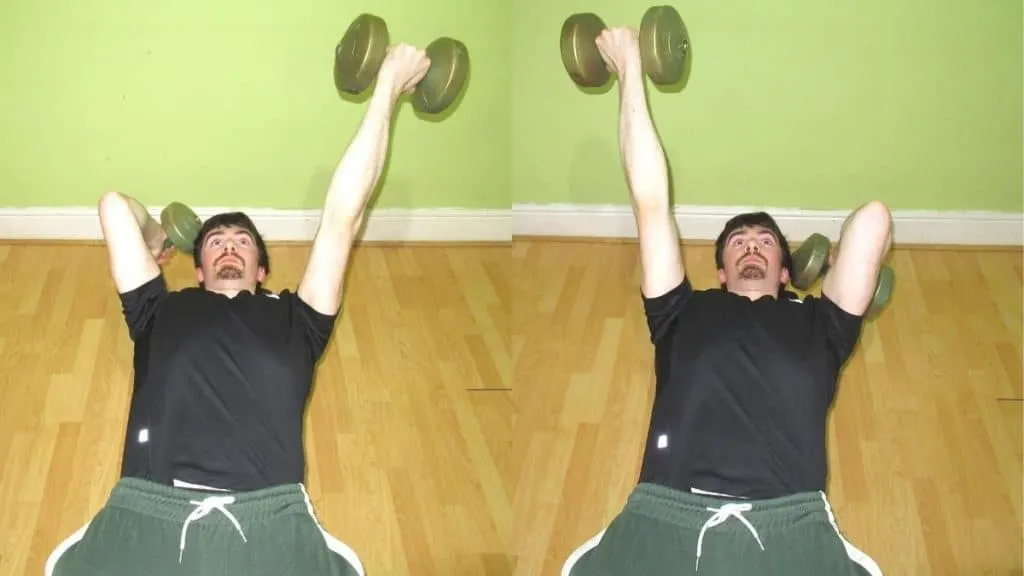
Reverse grip alternating dumbbell skullcrushers ensure that both of your triceps receive equal amounts of work and thus grow in proportion to one another.
Additionally, performing supinated skull crushers in an alternating fashion instantly enables you to perform more reps on every set.
This is because both of your triceps get to briefly recuperate during a short recovery period while their opposite tricep is working. So by the time that their next rep rolls around, your triceps will be fresher and able to contract that bit harder because they’ve had some time to rest.
As such, alternate reverse skull crushers are an excellent exercise for training your triceps with more volume without spending (much) extra time in the gym and without lifting heavier weights.
One arm reverse grip skull crushers
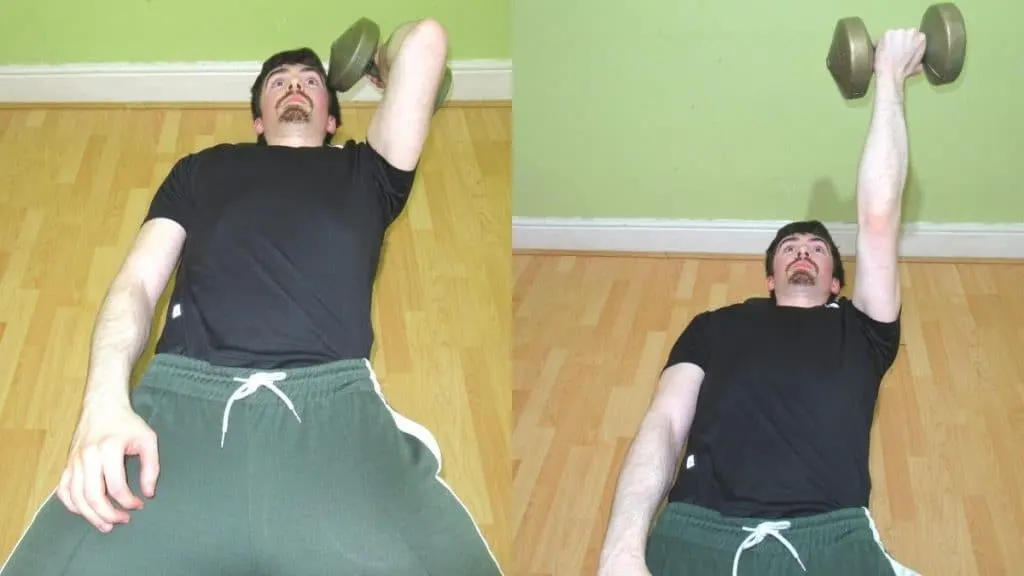
Reverse one arm skull crushers are one of the most effective exercises for sculpting symmetrical triceps because you have to lift each weight separately.
Unlike the pronated skull crusher, this single-arm setup enables you to dedicate 100% of your attention and strength toward working each of your tricep muscles.
In particular, the single-arm reverse skullcrusher is useful for developing a stronger mind-muscle connection because your brain only has to focus on moving one limb rather than the usual two.
Therefore, your nervous system can channel all of its resources into completely isolating each tricep to make sure that your muscles receive the best possible workout.
Kettlebell reverse grip skull crushers
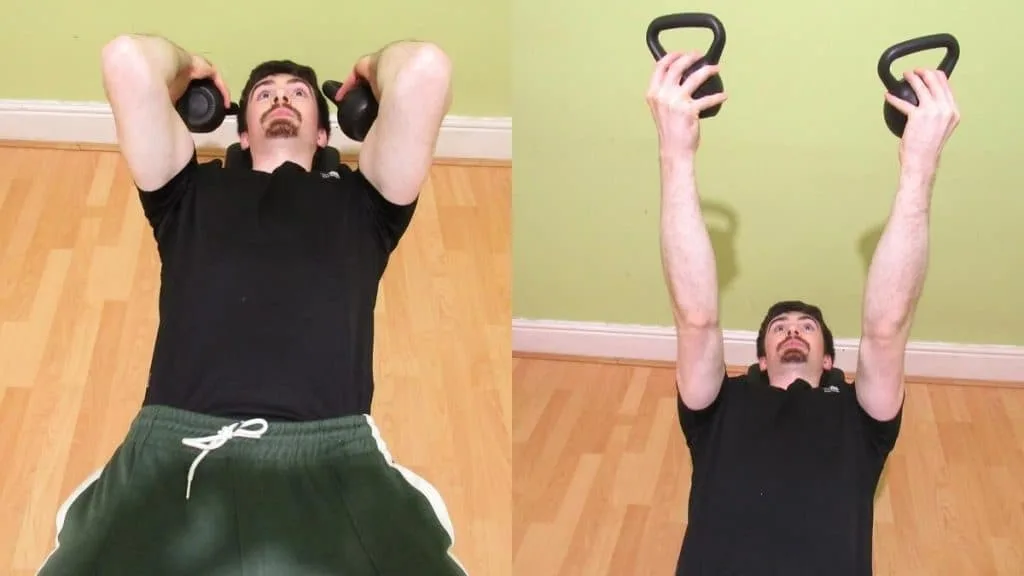
Reverse kettlebell skull crushers, like their dumbbell counterpart, are an effective exercise for reducing tricep size asymmetries because you have to lift each weight independently.
Therefore, both of your triceps get more or less equal work (though, as mentioned, whichever arm you have a stronger mind-muscle connection with will likely still receive better stimulation).
The issue with the reverse grip kettlebell skull crusher is that—like some of the other free-weight reverse skull crusher variations—you could hurt yourself by dropping the weight on your face.
So make sure to lift light and lower the weights to the side of or behind your head rather than to your forehead.
Band reverse grip skull crushers
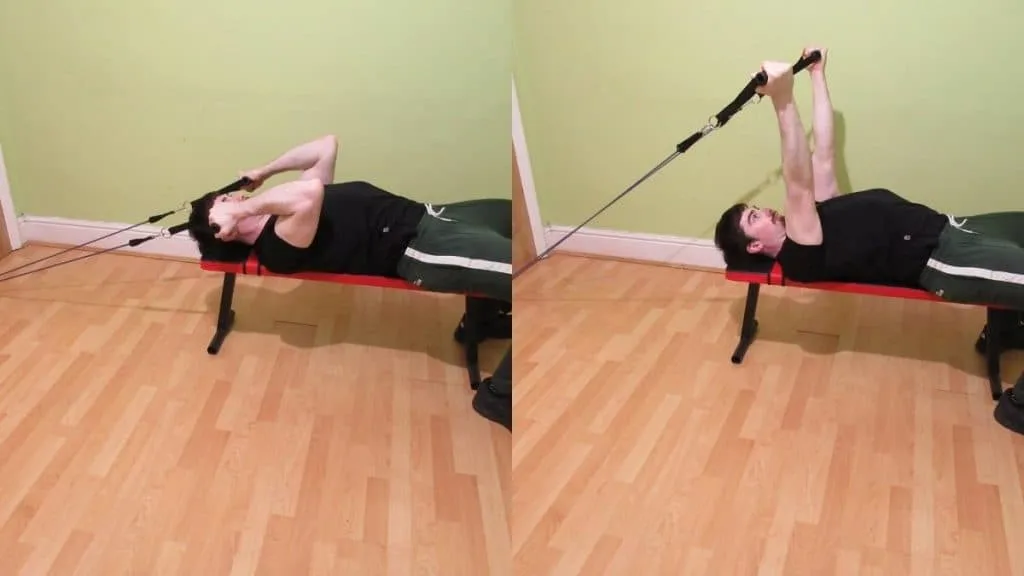
Along with the power rack version, the reverse band skullcrusher is the safest type of reverse grip skull crusher.
If you lose control of the bands, then they’ll simply fly back to the anchor point rather than hit you in the face.
Resistance bands are also very joint-friendly compared to free weights. So if regular underhand skull crushers bother your elbows, then the banded version makes a great substitute exercise.
And it’s not an exercise that you should underestimate, either. Band reverse skull crushers give your triceps are a great pump and can build a surprising amount of mass when you perform enough sets (3-5 sets per workout is plenty).
Better still, if you train at home, reverse band skull crushers don’t require any fancy or expensive equipment. In fact, you don’t even need a weight bench (although it would make the movement a bit more comfortable). You can perform the exercise on the floor as long as you have a secure place to attach your band to.
Read More: Three way skull crushers
Conclusion: Should you do reverse skull crushers to build your triceps?
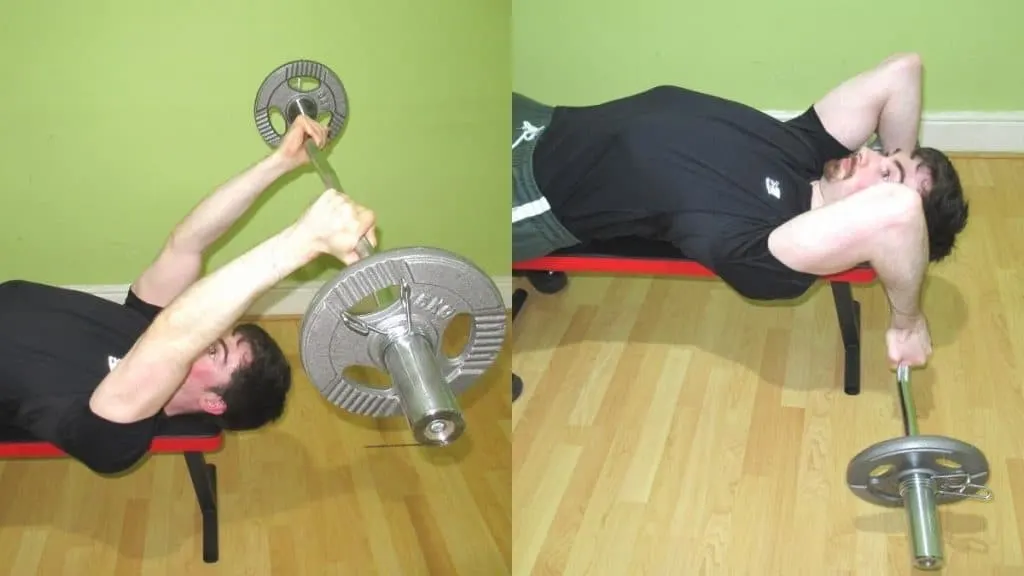
It’s fair to say that reverse grip skull crushers are a bit of a mixed bag.
On the one hand, the exercise can be very dangerous because if you lose control of the weight, then the bar will fall on your face and likely cause you a serious injury.
You can, however, modify the reverse grip skull crusher to make it much safer.
While the exercise may always irritate the elbows of some people, you can at least avoid dropping the weight on your face by performing reverse grip skull crushers in a power rack with the safety stoppers set just above head height. This way, if you accidentally drop the bar, then it will hit the safety pins rather than your face.

